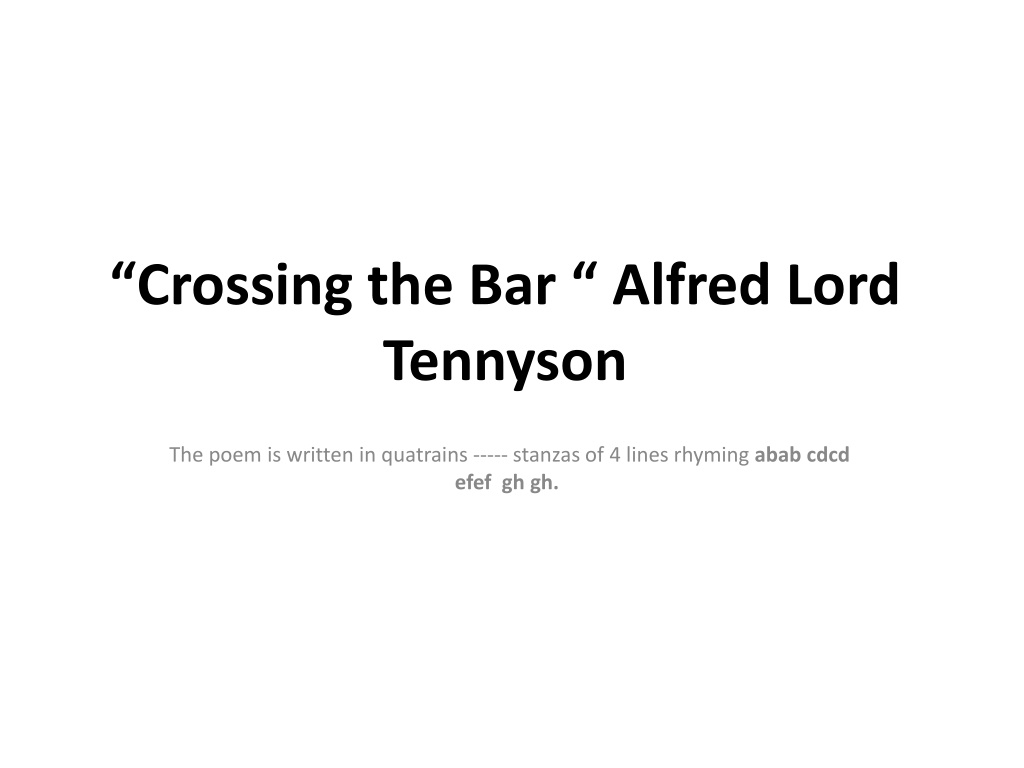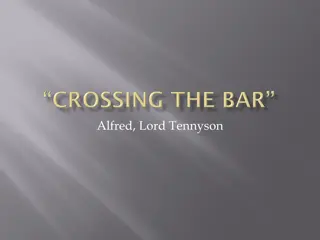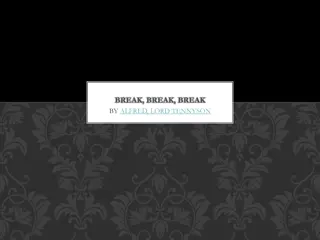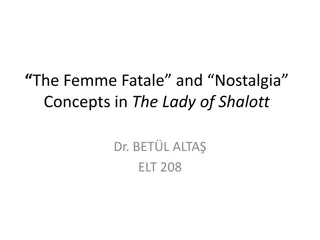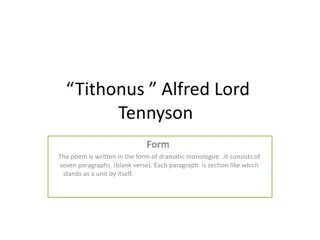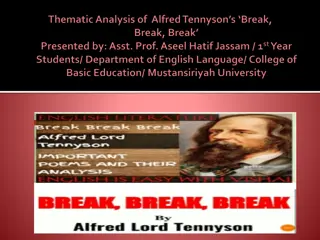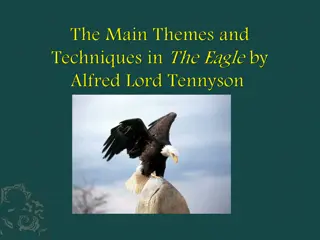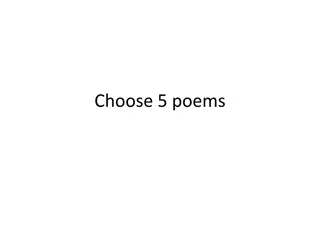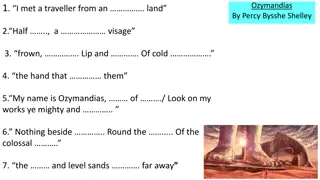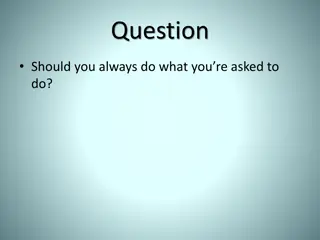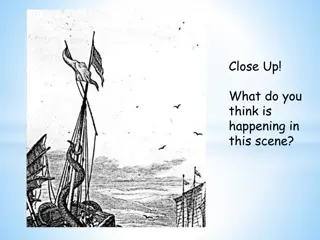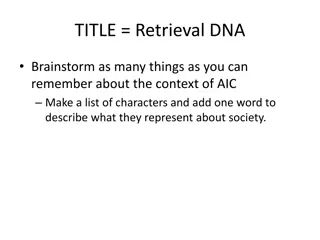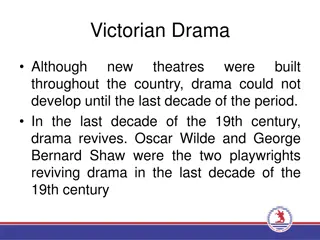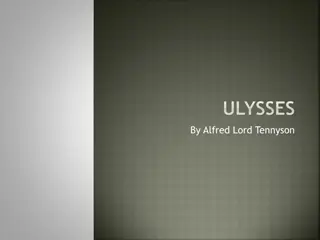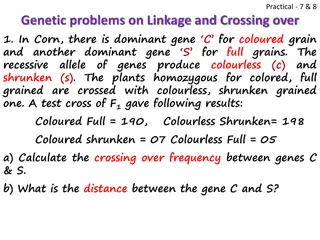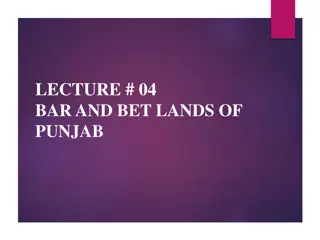Analysis of "Crossing the Bar" by Alfred Lord Tennyson
The poem "Crossing the Bar" by Alfred Lord Tennyson is written in quatrains, with each stanza of 4 lines rhyming abab, cdcd, efef, ghgh. The poet contemplates the journey from life to death, symbolized by crossing a sand bar. Through the sunset, tide, stages of life, and evening bell, the poet expresses a peaceful acceptance of death, hoping to meet his Pilot on the other side.
Download Presentation

Please find below an Image/Link to download the presentation.
The content on the website is provided AS IS for your information and personal use only. It may not be sold, licensed, or shared on other websites without obtaining consent from the author. Download presentation by click this link. If you encounter any issues during the download, it is possible that the publisher has removed the file from their server.
E N D
Presentation Transcript
Crossing the Bar Alfred Lord Tennyson The poem is written in quatrains ----- stanzas of 4 lines rhyming abab cdcd efef gh gh.
Analysis Quatrain 1 It is the sunset and the rise of the evening star . The speaker ( poet ) hears that he is being called ( by the angel of death ). He hopes that the ocean will not make the mournful sound of waves ( personification ) beating against a sand bar when he sets out to sea . The sand bar is used metaphorically to describe the barrier between life and death .
Quatrain 2 The poet wishes for a tide that is so full that it contains neither sound nor foam and therefore seems asleep when all that has been carried from the boundless depths of the ocean comes back to depths . The bountiful tide which has swollen so tremendously represents the fact that life can sometimes become overflowing with various activities which gradually come to a regression. However as the ship turns again home a top of the smooth tide , one s life begins to regress somewhat . Just as tides which ebb and flow , man s life progresses through stages which follow a pattern similar to ebbing and flowing.
Quatrain 3 The constant progression from day to dusk to evening to twilight represents how each person gradually progresses through the stages of life ( symbolism ). The poet wishes to put out to sea( death ) peacefully . He does not want his relatives and friends to cry for him after he dies.
Quatrain 4 The poet announces the close of day and the evening bell which will be followed by darkness. He hopes that no one will cry when he departs because although he may be carried beyond the limits of time and space , he retains the hope that he will look upon the face of his Pilot when he has crossed the bar .
